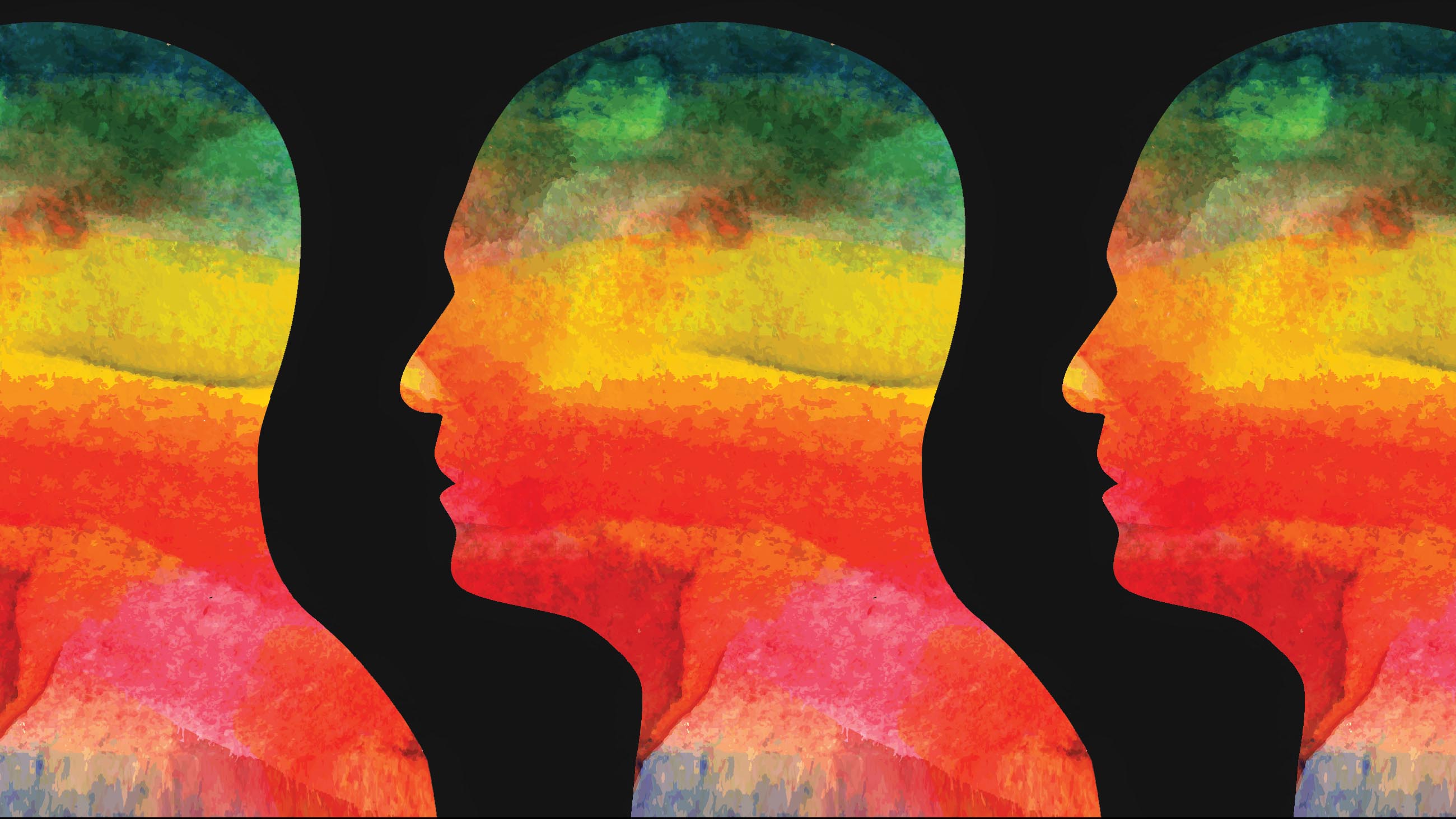Psychologists Seek a Broader, Healthier Definition of ‘Masculinity’
Situated in the heart of the San Juan Mountains, Durango, Colorado is home to some of the most beautiful scenery in the United States. Its sunny canyons and rushing rivers provided part of the backdrop for iconic Western movies including “Butch Cassidy and the Sundance Kid,” and continue to draw tourists and outdoor sports enthusiasts, along with new residents who contribute to a steadily increasing population. But all is not well in Durango. The city is part of the so-called “suicide belt,” spanning roughly the length of the Rocky Mountains, where the suicide rate is almost twice the rate of the national average.
Jarrod Hindman was determined to tackle the problem in 2006, when he was tasked with overseeing violence and suicide prevention as part of his position with the Colorado Department of Public Health. Having grown up in Colorado, Hindman’s interest was personal. In high school, he lost a friend and teammate to suicide. Still, when Hindman looked at the statewide data, he was surprised to find that the vast majority of suicide victims in Colorado, almost 80 percent, were adult men. At that time, almost all suicide intervention and outreach efforts were focused on adolescents, and they emphasized talking about feelings and not being afraid to ask for help. That approach, said Hindman, could be an active turn off for the population most at risk.
“We still really embrace that rugged individualism, cowboy mentality,” in the western U.S., said Hindman. If you are a man struggling with something, particularly an emotional issue, “the response is: ‘Pull yourself up by your bootstraps. Problem-solve on your own.’”
While Durango is noteworthy for its high suicide rate, the pattern reflects a broader national trend in which adult men are 3.5 times more likely than women to die by suicide, according to the American Psychological Association (APA). And suicide is just one of several negative health outcomes that disproportionately affect men. For example, despite having greater socioeconomic advantages, men’s life expectancy is almost five years shorter than women’s. The difference isn’t all biological, said Wizdom Powell, an associate professor of psychiatry at the University of Connecticut and chair of the APA working group on Health Disparities in Boys and Men. “If it were, then we then would see similar rates of premature death and mortality among men and boys of all racial and ethnic groups, and that is not the case.”
Scientists and non-scientists alike have known about men’s increased mortality for decades, and it’s often taken for granted that women tend to live longer. But the issue did not receive much attention until last month when the APA released the first set of guidelines aimed specifically at treating men and boys, having already published guidelines on treating women, LGBQ, transgender and non-binary clients, and people of various cultural backgrounds. The guidelines draw on three decades of research into “gender-role conflict” and “gender-role stress,” the psychological state and accompanying emotional distress that exist when restrictive definitions of gender limit a person’s well-being.
The new guidelines sparked immediate backlash on social media and in newspaper op-eds. Conservatives like Laura Ingraham accused the APA of “pathologizing” masculinity and stripping men of their essential manliness. In the academic realm, Steven Pinker, a professor of psychology at Harvard, criticized the guidelines for ignoring the biological factors — such as testosterone levels — that contribute to gender differences, and for downplaying the benefits of self-control and self-reliance.
And yet, the gulf that separates the various camps might not be as wide as the recent debate suggests. Fred Rabinowitz, who led the effort to develop the guidelines, said that the document seeks to support men who are “brave and strong and tough in difficult situations.” But, he adds, “when there is a situation that requires sensitivity, empathy, and communication, men should be able to shift gears and be able to do that as well.”
“Boys learn at a young age that there is one way of being a man, and when they deviate from that, they get punished,” said Matt Englar-Carlson, a professor of counseling at California State University, Fullerton. They are often told to “man up” and not to cry. If they don’t conform, said Englar-Carlson, boys risk being taunted with insults like “bitch,” “pussy,” and “little girl” — all of which associate emotion with weakness and femininity. As a result, adult men tend to bury their emotions. In fact, research suggests that when men are socialized to be rigidly self-reliant and strong, they are less likely to seek mental health treatment or medical care.
To better reach this group, the APA guidelines stress that doctors and health care workers should take a hard look at their own personal assumptions and biases about masculinity. “Health care providers may be primed not to talk about certain subjects with men,” said Powell. Studies have shown that some doctors, whether because of personal assumptions or time constraints, are far less likely to ask men about their mental health and family life. Powell, therefore, recommends “appointment maximization strategies.” That means packing as much as possible into each visit, including screening for depression every time a man or boy turns up at a primary care appointment. This doesn’t have to be intrusive or time consuming. It can take place via a 10-minute pen and paper questionnaire in the waiting room.
Psychologists, too, may need to rethink their approach. “Often men and boys don’t have the language to discuss their emotional, interior life,” said Rabinowitz, who frequently works with men with anger issues in group and individual counseling. “I try to use their language,” Rabinowitz said. He gives the example of a house painter he was seeing who was dealing with a breakup. “Instead of saying ‘That must have really hurt,’ I said something like ‘It must have felt like you fell from the second floor of a house.’ And all of a sudden he was like ‘Yeah, it fuckin’ does hurt like that.’”
Of course, men are not a unified block. Like women, they have other identities that intersect with gender to create their unique human experience. The APA guidelines, therefore, refer to “masculinities,” to account for the way that gender identity is shaped by factors such as race, class, and sexual orientation. African American men, for example, may be especially wary of the medical establishment due to a well-documented legacy of racism within American medicine. “It’s real and it’s also rational. Because those things did happen. And they are still happening today,” Powell said. Though the evidence is somewhat mixed, studies have shown that doctors have a preference for white patients and that these racial biases impact the treatment decisions and recommendations that they make, with people of color generally receiving lower quality care.
But these attitudes are not set in stone. For the past decade Powell has conducted several studies surveying African American men in barbershops and academic institutions around the U.S. about their experiences with the health care system and attitudes about masculinity. Her research showed that the more someone endorsed masculine norms and distrusted the medical establishment, the less likely they were to seek help from a medical professional. When the participants had positive experiences with the health care system, however, they tended to modify their opinion — “like any adaptive human,” Powell said. What seems to have the most impact, “is what’s happening in the here and now.”
Powell notes that, in some cases, masculinity norms can be leveraged to beneficial effect. For example, men who strive to be self-reliant might be more inclined to see a doctor if they view this as an act that enables them to care for their family.
This is in line with a treatment paradigm referred to as “positive masculinity,” which promotes the healthy, nurturing aspects associated with being a man — such as taking pride in being a protector and provider. “Masculinity itself may not be toxic,” said Englar-Carlson. “What makes it toxic is when men overconform, or when they have a rigid notion of what it means to be a man and cannot deviate when the situation requires it.”
Because boys are socialized not to cry or talk about their feelings, they may express their pain outwardly in ways that are destructive to themselves and others, said Christopher Liang, head of the Gender, Race, Inclusion, and Trauma lab at Lehigh University. “Of course, not all men who engage in violence are dealing with masculinity issues, but a lot of them just may be,” Liang said. The guidelines, then, “are about understanding the factors that shape boys and men in healthy ways and not so healthy ways.”
“That’s the real crux,” Liang added. “How do we help men be healthier for themselves and other people?”
In order to get men to open up, Rabinowitz says, it’s important to suspend judgment and adopt a neutral tone when discussing the violence that may have landed them therapy. Such men often feel guilty about their actions and build up strong psychological barriers and attitudes such as victim-blaming that help them avoid taking responsibility and dealing with painful feelings of shame. After getting men to open up about the emotions underneath their anger, which often covers up feelings anxiety or depression, Rabinowitz will then ask these men if their behavior ultimately got them what they wanted.
The answer is almost always no. Explosive outbursts eventually drive loved ones away, said Rabinowitz. With this understanding, clients begin to work on communication and coping strategies that can help them better identify and manage their emotions.
Back in Colorado, after discovering that the state’s suicides were overwhelmingly committed by adult men, Hindman decided to put his small amount of discretionary funding towards the problem. Thus was born “Man Therapy,” a suicide prevention campaign created by the Colorado Department of Health with outside partners. It aims to reach men by using humor to expose stereotypes around masculinity and therapy. The face of the campaign is a fictional character who resembles Ron Swanson, the stoic department head from NBC’s “Parks and Recreation.” He deadpans lines like “Did you know men have feelings too?”
Launched in 2012, Man Therapy was an immediate success — by some metrics. A preliminary internal report from 2014 found that visitors spent an average of six minutes on the site, compared to just 15 seconds on average for a typical website on the internet. When surveyed, half of all visitors said they were more likely to seek help after visiting the website. In 2016, the University of Maryland at Baltimore received a grant from the CDC to formally research the effectiveness of the program.
Elsewhere, other approaches are being rolled out. For instance, therapists are now being embedded within military units, where both men and women may experience trauma and other behavioral health issues, but also need to meet rigid expectations to be strong and battle-ready. Powell, who has worked with the military community, explains that the challenge is to prepare soldiers who can fight battles and then disarm themselves when they come home to their families and communities. She explains: “You don’t want to have to be ready for battle in your living room.”
Despite the controversy surrounding the APA’s guidelines, Powell notes that gender roles are already more fluid than they were a few decades ago. New generations, she said, “are starting to really push back on this mythical ideal of what it means to be a man, which really is not fully attainable by anybody. No one can be that man.”
Roni Jacobson is a freelance science journalist who primarily covers psychology and mental health. Her work has appeared with Scientific American, Vox, The New York Times, Vice, and The Atlantic, among other outlets.











Comments are automatically closed one year after article publication. Archived comments are below.
How wise, how graced with scientifically-based righteousness we now are! Having twisted the words “sex” and “gender” into pathetic caricatures, our recently-acquired wisdom shames the generally-uniform-across-cultures definition of manliness that has prevailed since the dawn of time.
As women in large numbers are now being persuaded by fourth-wave feminism to abandon their intrinsic beauty and focus on life so as to embrace solely the material and dominance values that used to be the exclusive province of men, so now men are being subtly enticed to abandon their fundamental masculinity and become women. An entire “rights” movement bears witness to the incredulity that not only can this happen, but indeed it must. When we meet in the middle as rootless, genderless, character-free wanderers, will the world then truly be as one, as John Lennon so pathetically whined?
If a plot to utterly destroy us from the inside out was desired, could a more insidious one than this be imagined?
Oh…thanks for waking me up, sweetie. Wow, was I having a nightmare! Political correctness had become so endemic that it was even dragging the sciences down and was sweeping the world. Yeah, you’re right. That can’t be possible. But it seemed so real…. The kids are sleeping? Good. Let’s you and I go back to bed. Mmm..you smell so nice….
Your rant would appear to be evidence that we really need to move away from gender nonsense and start emphasizing the fact that we are human beings, each boasting a brain and consciousness.
I grew up with asperger’s syndrome. This was in the 90’s when it was new, and the elementary school I was at suspected it because of the difficulties I had. I completely failed to mature socially, dropped out of college. There wasn’t anything driving my life. People were enemies to me no matter how they treated me.
At 23, after two years of one to one therapy, my therapist recommended a partial hospitalization program. There was a worksheet on ‘boundaries’ presented to us. That was the first time I understood expressing emotion. Before that, I simply didn’t understand the context, the why-am-I-doing-this.
I spent years afterwards learning what it is to be a person through podcasts and the internet. I think that American society itself is far too greedy when it comes to what it wants people to be. People are not tools to be fixed. They don’t want help. They are humans with desire. Society exists for people and because of people, not the other way around.
I think Orson Scott Card was correct when he said, “Society is for women.” I’ve spent years watching anime reading male adolescent targeted works. All of them are primal stories, they consist of a man going after what he wants out of life, building a society of his women, and challenging the odds against those who hold power.
My current theory on male culture American society doesn’t have the perspective necessary to understand these primal urges. America spent years playing the warrior archetype card over and over, our President is a warrior archetype. Get things, build wall. What I think this male culture needs is discussion and strategy.
Men need a path to walk and support to get there, they don’t need a reason to seek power, that lies within them already. What we’re not doing in America is letting men be men. However, there are already people who have realized this and are solving the problem.
The Joe Rogan Experience podcast is the perfect example of a new masculine archetype for this era. Joe Rogan the comedian and host himself is an example of this, he is a former fighter and comedian who admitted on his podcast that he was not always a nice person, he learned how to do it through the discipline martial arts brought him. He talked about how he has inspired many to pick up martial arts because of listening to his podcast.
This archetype is the hermit archetype, the guide, or in Joe Rogan’s case the fool archetype or fallen guide. In the business world, I have listened to a podcast from the marketing company Storybrand that has the motto “If you confuse, you lose.” The host of that podcast suggests that businesses play guide to their customers.
We are entering an era of unprecedented levels and volume of communication. What America lacks is connection. That is not something easily won. I think what men need to be taught the most, from an early age, is how to connect with people. There is an unwritten expectation that friendships are supposed to form naturally.
Men have computers now. If they want women, they have porn. Men want connection too. Until American culture at large begins to understand men’s desire for connection and chooses to play a support role to allow this to happen on a bigger scale, men’s quality of lives will worsen and you will see them choose to shut themselves out of society to be alone with computer they control fully, rather than make themselves vulnerable in a society that doesn’t give them a clear roadmap to connection and power.
Thank goodness for my dad doing two things. 1- when I was a kid I told him his pink shirt was for girls he told me emphatically that a man can wear pink if he wants. What makes him a man is what he does, not what hes wearing.
2- he introduced me to Bruce Lee pretty young. My idea of a superman was never bossy and never bragged, and he didn’t take one hit more than he had to. Don’t be a hot head, think of your friends and family, when offered advice you don’t have to take it but always be considering.
I never had to do anything to “feel like a man”. And I never hurt anybody for no reason or allowed myself to be unfair.
That’s all cause of my dad’s hotpink shirt and fists of fury
Women and girls attempt suicide at higher rates than men and boys, but are less “successful” at it. This is well evidenced and a needed part of this discussion, and in no way diminishes the need to focus on the needs of men and boys.
If one assumes that the primary motivator for males is to mate, I think the new approach to their mental health does not address this issue. Their self-esteem is largely based on who they can mate with and scoring with a beautiful partner drives them to over-achieve, so that if they are not super handsome or well-endowed, healthy men work hard to become famous and/or rich enough to attract these pretty ones. Many people feel free to refuse to even consider partners who lack money, beauty, fame, etc.
That said, I think psychologists ought to convince their male clients that there are people out there who are not so shallow. How to find these “real” ones, how to approach and “woo” them and, most of all, how to appreciate them for what they can do may be more helpful. We all don’t all want big wallets or “hands.” Some of us are looking for the one who can complete us.
Well said, Sandy. I personally know a lot of women who are NOT interested in the “macho men” of the world, including myself. In my opinion, men are selling themselves short if they think they have to be tough and reserved all the time, or that they have to have a big bank account and an important position in society. If a man knows how to treat a women well and reveal his sensitive side (without worrying about his ego), he doesn’t need to have the fat wallet or be exceptionally handsome. In fact, I have found that the men society would deem “average” in all those areas mentioned, are some of the most amazing partners.
I’m afraid it’s a lot more complex than that. Do males have to mate more than women do? Males are also about protecting what they think is their own. And about a lot of other stuff as well.